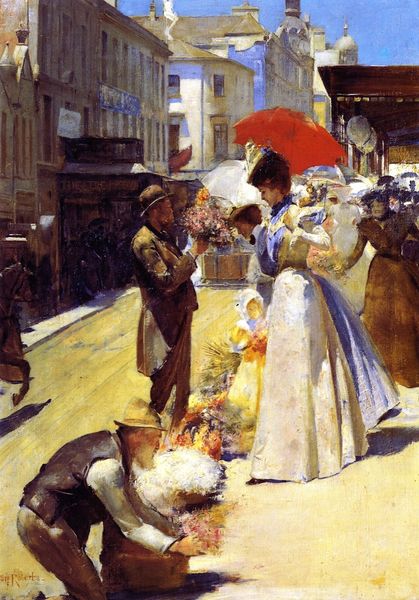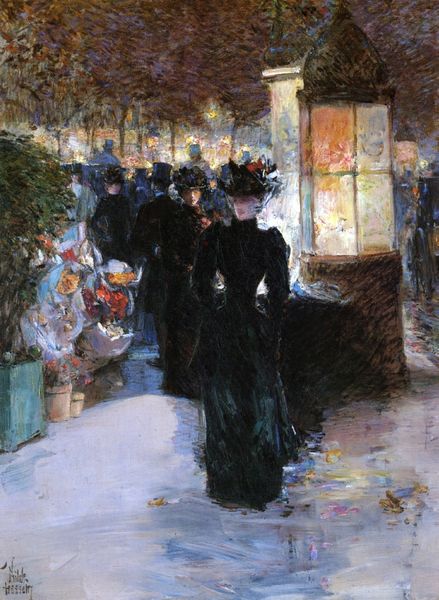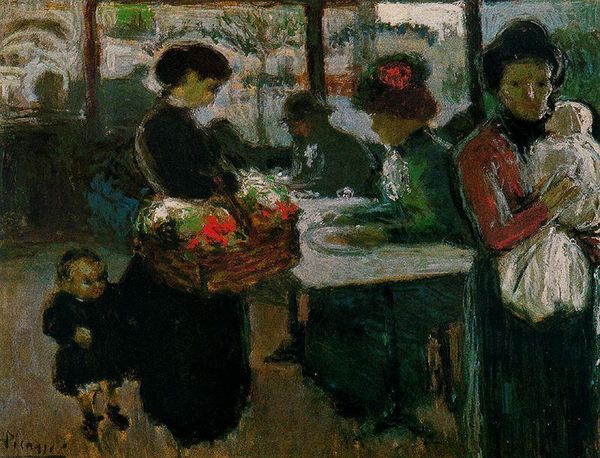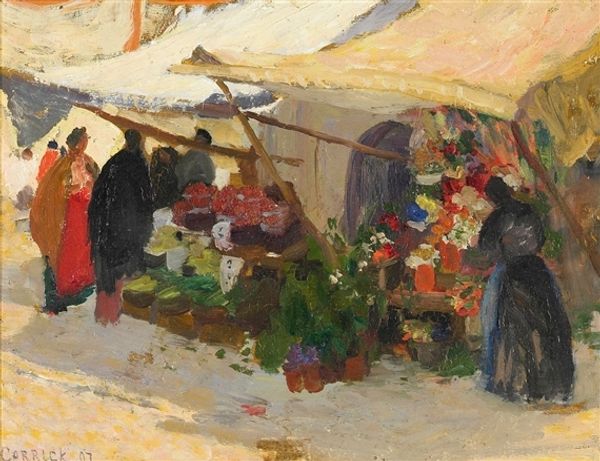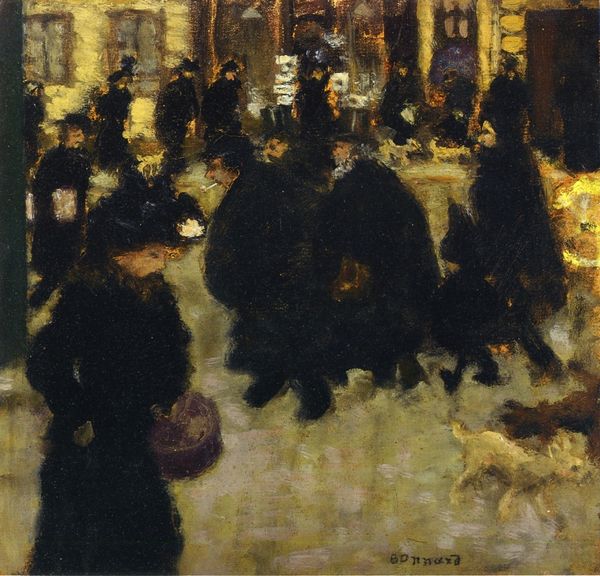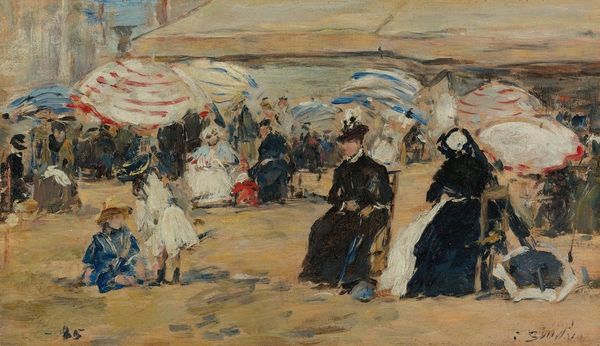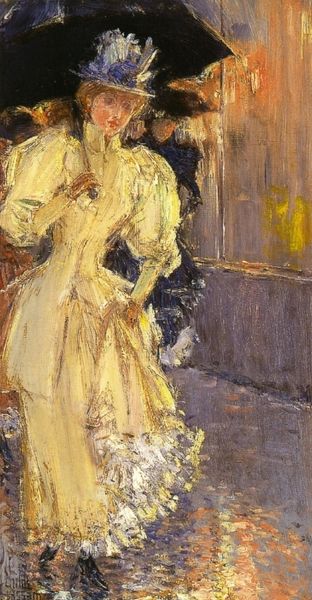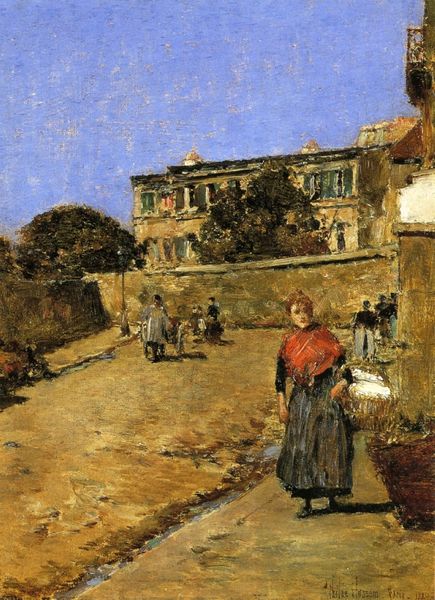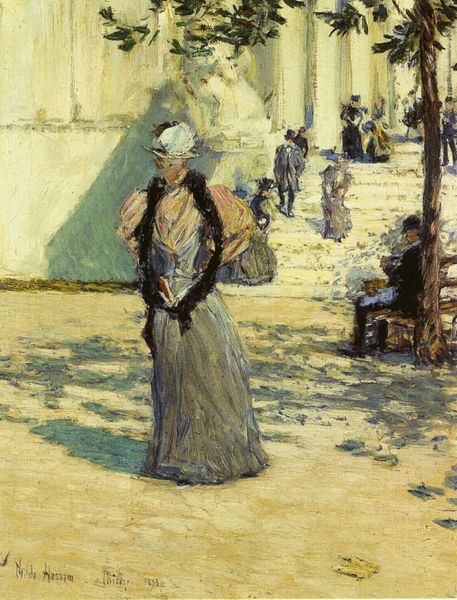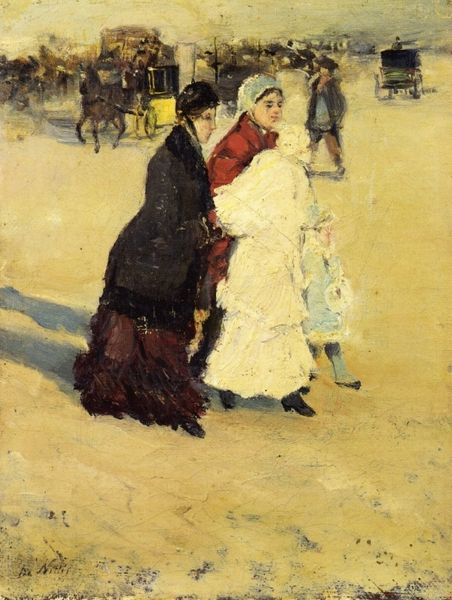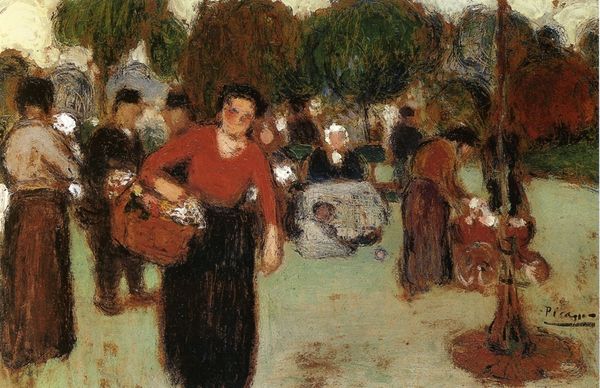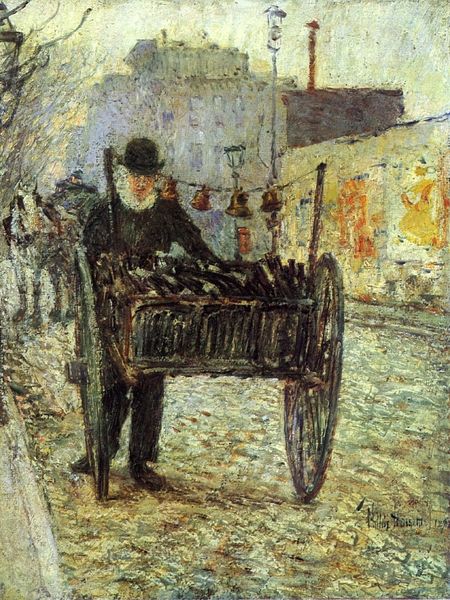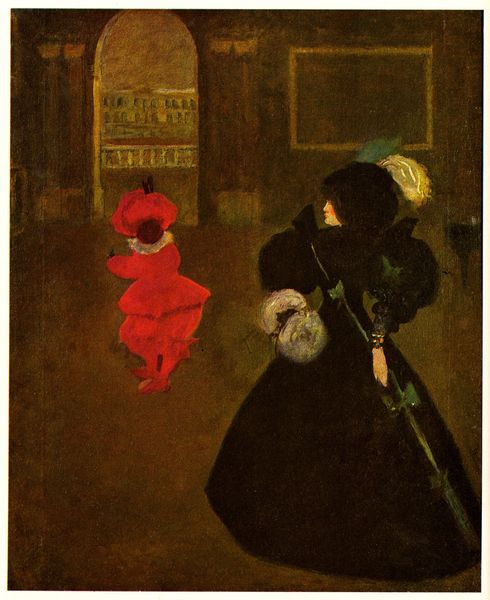
Dimensions: 24 x 28.5 cm
Copyright: Public domain
Curator: Pierre Bonnard’s “Woman on the Street,” created in 1894, offers a fleeting glimpse into Parisian life. Editor: It's undeniably moody, isn’t it? The palette is so restrained, almost monochromatic, save for the vibrant splash of red in the woman's blouse. Curator: Indeed. That deliberate use of color amplifies her presence, highlighting the complexities of being visible yet somehow anonymous within the city's social fabric. Consider how the rise of the flâneur as a social figure intersected with changing roles for women in urban spaces at the time. Editor: Visually, the brushstrokes are quite active, broken, capturing the fleeting movement of light and shadow. It’s almost as though Bonnard is deconstructing the scene right before our eyes, prioritizing the experience of perception over precise representation. Curator: Precisely. And it makes me wonder, whose gaze are we sharing? The painting becomes an investigation of female identity amidst shifting social expectations. Are we observing with a critical, perhaps even patriarchal, eye, or are we invited to empathize? Editor: I'm drawn to the interplay between the figure in the foreground and the blurry forms behind, figures within carriages, glimpses of animals; the buildings become simplified blocks of tone and light. The formal structures are really interesting, pushing towards abstraction, Curator: This evokes the burgeoning Impressionist aesthetic, with Bonnard embracing the everyday, turning a seemingly casual encounter into a profound meditation on modern life. He transforms a mundane street scene into an experience thick with questions of class, gender, and societal expectations. Editor: It feels so modern still. Its lasting appeal might be the success in simplifying into essential forms and colors. It teases our understanding of representational and abstract elements—there's a sophisticated ambiguity. Curator: Absolutely. Bonnard’s painting isn't merely a snapshot of 19th-century Paris; it's an invitation to explore the intricate web of social, political, and personal narratives woven into the fabric of urban existence. Editor: Well, its reduction to such basics offers its own intriguing take, forcing us to engage directly with its raw emotion and visual poetics.
Comments
No comments
Be the first to comment and join the conversation on the ultimate creative platform.
